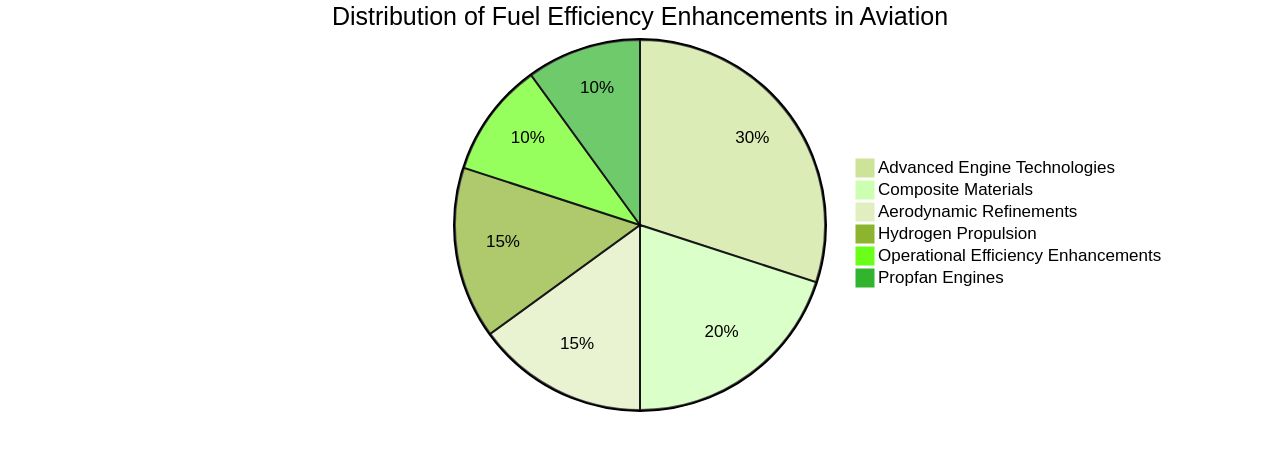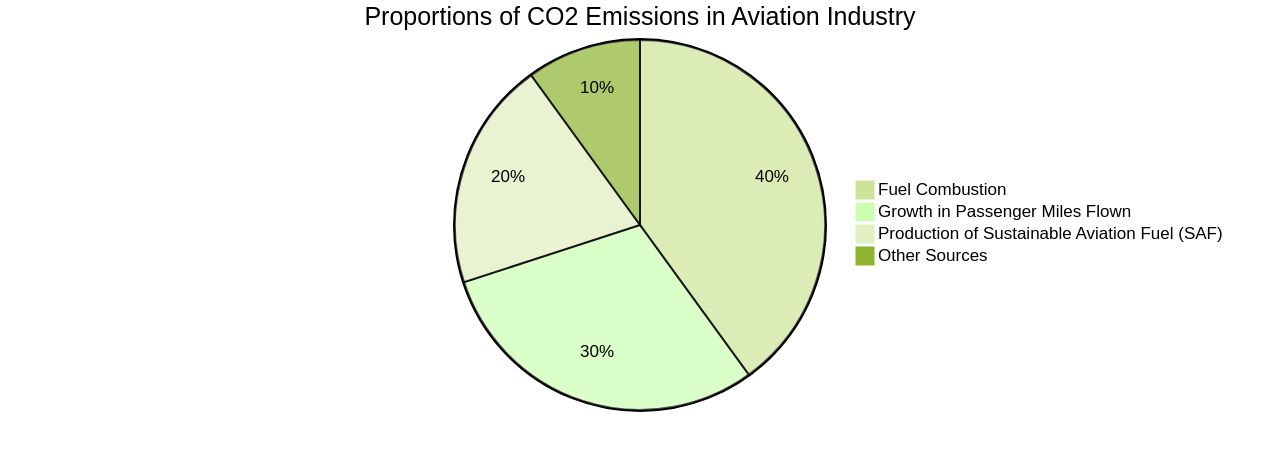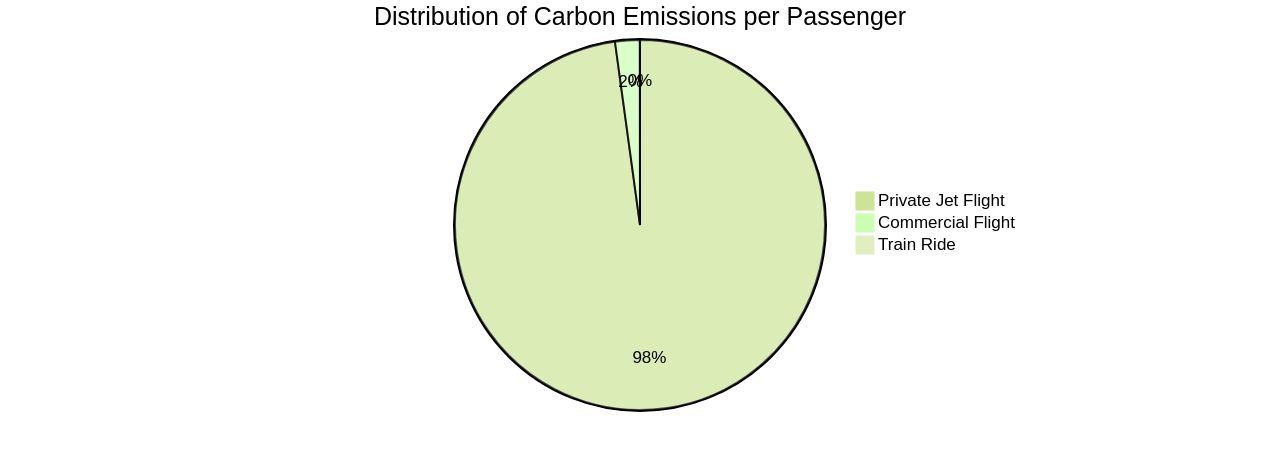Introduction
In the realm of transportation, aviation presents unique challenges for fuel efficiency. Unlike terrestrial vehicles, aircraft must carry substantial fuel reserves to traverse vast distances, necessitating specialized equipment and safety measures during refueling.
The industry has seen continuous improvement in fuel efficiency through the use of composite materials, advanced engine technologies, aerodynamic refinements, and operational efficiency enhancements. However, the growing demand for air travel is expected to outpace these advancements, leading to an overall increase in energy consumption.
The article will explore various technologies and strategies being developed to improve fuel efficiency in aviation, including hydrogen propulsion, propfan engines, and mass reduction techniques. It will also discuss the global carbon emissions from aviation and the challenges faced in decarbonizing the industry. Additionally, the article will examine the impact of seating layouts on fuel consumption and emissions, highlighting the differences between economy class and business/first class cabins. Overall, this article provides a technical and analytical analysis of fueling efficiency in planes compared to other modes of transportation.
Comparative Analysis of Fueling Efficiency in Planes vs. Other Modes of Transportation
In the realm of transportation, aviation presents unique challenges for fuel efficiency. Unlike terrestrial vehicles, aircraft must carry substantial fuel reserves to traverse vast distances, necessitating specialized equipment and safety measures during refueling.
The industry has seen continuous improvement in fuel efficiency through the use of composite materials, advanced engine technologies, aerodynamic refinements, and operational efficiency enhancements. However, the growing demand for air travel is expected to outpace these advancements, leading to an overall increase in energy consumption.
Hydrogen propulsion, as advocated by Airbus, has emerged as a promising technology due to its low CO2 emissions and potential for lighter aircraft with lower operating costs. The recent HYPERION project, a collaboration between Airbus and ArianeGroup, has successfully tested a complete system for feeding hydrogen to an aeronautical gas turbine engine, aiming to produce practical hydrogen commercial airliners by 2035.
General Electric, in collaboration with CFM Rise, is developing a 'propfan' engine, a technology first conceived in the 1970s. This engine promises a 20% fuel saving over conventional turbojet engines, demonstrating significant potential for fuel efficiency.
Moreover, the industry is exploring the potential of reducing an aircraft's resistance through mass reduction and improvements in motor efficiency. These changes can lead to significant fuel consumption reductions, with estimates suggesting a 1% reduction in mass could lead to a 0.75% decrease in fuel consumption. However, the transition to these new technologies is not without challenges. The significant cost of new aircraft and infrastructure, coupled with the need for competitively priced renewable hydrogen, may slow this transition. Nonetheless, these advancements in aviation fuel efficiency hold promise for a more sustainable future.

Global Carbon Emissions from Aviation
The aviation industry, representing around 2.5% of global CO2 emissions, is under increasing pressure to decarbonize. The sector's unique constraints, such as weight and size limitations, long innovation cycles, and a focus on safety, exacerbate this challenge.
Although fuel efficiency has improved by an estimated 39% from 2005 to 2019, the absolute growth of emissions considerably outweighs these advancements. Projected sector growth is highest in developing nations, fueled predominantly by an influx of first-time air passengers.
This growth, along with the emissions from aviation fuel combustion, contributes to roughly 2-3% of anthropogenic climate change. Despite newer aircraft becoming more fuel-efficient, emissions are expected to increase in line with passenger miles flown.
The industry is also wrestling with the growing scarcity of Sustainable Aviation Fuel (SAF), which currently represents a mere 0.1% of airline consumption. While synthetic aviation fuel holds promise for significant carbon emission reduction, the exact reduction percentage remains uncertain.
The production of SAF at scale is relatively costly, potentially diverting resources from other critical decarbonization priorities. However, promising solutions are emerging.
Unifuel.tech, for instance, offers a technology called Flexiforming that allows operators to choose their decarbonization pace. Flexiforming can be implemented in an idle hydrotreater or reformer, decreasing both capital expenditure and carbon intensity. This technology could be a game-changer, helping the industry reconcile its growth aspirations with its emissions reduction commitments. For meaningful decarbonization, industry-wide transparency and adaptability are essential. This means prioritizing actions with the highest impact and charting a cost-optimal path to net-zero emissions. The industry must also harmonize its growth ambitions with its emissions reduction commitments, especially considering the ambitious sustainability goals set by airlines for 2050.

Comparing Emissions: Economy Class vs. Business and First Class
The layout of seating within an aircraft significantly influences fuel consumption and emissions. Spacious seating arrangements, often found in business and first-class cabins, tend to reduce the passenger capacity per flight, thereby impacting fuel efficiency. For instance, private jet travel, which saw a 23% increase in the United States during the pandemic recovery, results in over ten times the emissions per passenger as compared to commercial flights.
To illustrate, a 90-minute private jet flight generates approximately 7,913 pounds of carbon emissions per passenger, which is over 45 times that of a commercial flight and more than 1,130 times greater than a train ride on the same route. Airlines are constantly innovating to maximize the use of space on planes. For example, United Airlines plans to implement a new boarding process, known as WILMA (window-middle-aisle), expected to reduce boarding times.
This method prioritizes boarding for passengers in window seats, followed by those in middle and aisle seats. Research has also suggested that widening seats, given the same additional floor area, is more effective for comfort than increasing the pitch, potentially leading to more efficient use of floor space. In addition, advancements in seat design and technology, such as the updated version of the Jamco Venture seat used by KLM in their 777 refresh, aim to enhance passenger comfort while reducing emissions by using lighter materials.

Conclusion
In conclusion, the aviation industry faces challenges in achieving fuel efficiency as demand for air travel continues to grow. However, advancements in technologies like hydrogen propulsion and propfan engines show promise in reducing emissions.
Hydrogen propulsion offers low CO2 emissions and lighter aircraft, with plans to introduce practical hydrogen commercial airliners by 2035. The propfan engine demonstrates a 20% fuel saving compared to conventional turbojet engines.
Efforts are also focused on reducing resistance through mass reduction and motor efficiency improvements. Even a 1% reduction in mass can lead to a 0.75% decrease in fuel consumption.
However, the transition to these technologies is hindered by cost considerations and the availability of competitively priced renewable hydrogen. The aviation industry's global carbon emissions represent around 2.5% of total CO2 emissions.
While fuel efficiency has improved, the absolute growth of emissions outweighs these advancements. Solutions like Unifuel.tech's Flexiforming technology offer opportunities for decarbonization at a manageable pace and cost. Seating layouts within aircraft impact fuel consumption, with spacious arrangements in business and first-class cabins reducing passenger capacity per flight. Private jet travel generates over ten times the emissions per passenger compared to commercial flights. In summary, embracing technologies like hydrogen propulsion and propfan engines can contribute to a more sustainable aviation industry. However, addressing challenges such as the scarcity of Sustainable Aviation Fuel and optimizing seating layouts will be crucial for meaningful decarbonization efforts.




